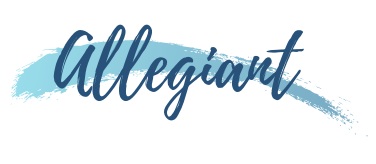The Costs and Savings of Copyrighting your Work
In addition to financial planning, I love to create custom jewelry and art, which is why I’m passionate about helping creatives better manage their money. However, last month, I had a surprising discovery.
I was casually scrolling Instagram (as we do!) and stumbled across a piece so similar to mine that I thought it was mine for a second!? Turns out, a competitor is clearly VERY inspired by my designs and decided to create something unusually similar to my own original work.
Today I’m expanding on the last blog post about registering, copyrighting, and trademarking to discuss the costs of ensuring others can’t copy or “rip off” your work. I’ll be discussing just how cost-intensive this is and how it could save you on both cash and headaches in the future.
One of the simplest ways to protect your work is by copyrighting it.
This prevents others from making use of your work without your permission, as the owner, otherwise, it gives the artist the exclusive rights to profit from the design, product or piece.
Not every creative invention can be copyrighted though and you should research whether your own original work can be copyrighted. Here is a short run down:
It costs between $35 and $85 to register your copyright application, depending on the type and method of application. However, it is worth noting that not all copyright applications are approved and sometimes a lawyer might be more skilled at writing the application for approval. Of course, this can bump up the costs enormously.
Once your work is copyrighted, there are a few actions you can take to prevent copycats from benefiting from your original ideas. It’s also important to state that even if your work is not copyrighted, but you can prove that you own it’s originality rights, you may be able to use these action steps. This is known as a “poor man’s copyright” and unfortunately has a drastically lower success rate in protecting your work against copycats.
If your work is being copied, the first thing you must determine is that it is NOT being used for educational, non-commercial research or teaching purposes as these are covered under copyright exceptions.
You may send a cease and desist letter (or email) to a company you find is infringing on your copyright. This warns them to take their work down or risk further measures from yourself as you attempt to protect your work. This is usually free if you write it yourself (and there are numerous templates online)
If things are serious and your copycat is receiving benefits such as large sums of money from the sales of copying your work, a lawsuit might be a necessary step to take. In this case, you’re likely to hire a lawyer, which can be expensive.
It can be useful to have a copyright in place if you receive a notification that a competitor is selling similar work. In this way, you should be able to prevent the competitor from profiting from your ideas, and take back your share of the market. It should also aid you in generating profit for the unique designs and pieces you create. This saves you on both stress and money, two things that are likely to heavily contribute to helping you run your business.
All in all, these steps are each useful to protect your work against copycats. What seems like it might be both time and cost-intensive to set up, copyrighting your work could save you later if you can prove that own the rights to your work. I’m not a legal professional, but I can help you manage your finances in case you need to pay out for lawyers, copyrights, or other expenses to help protect your business. Schedule a chat with me here.


